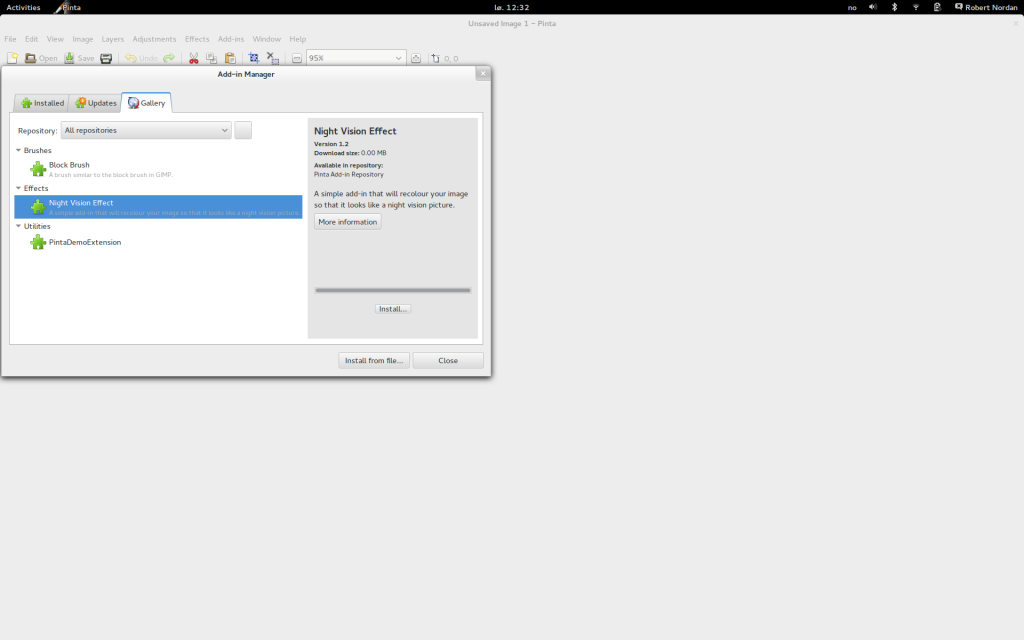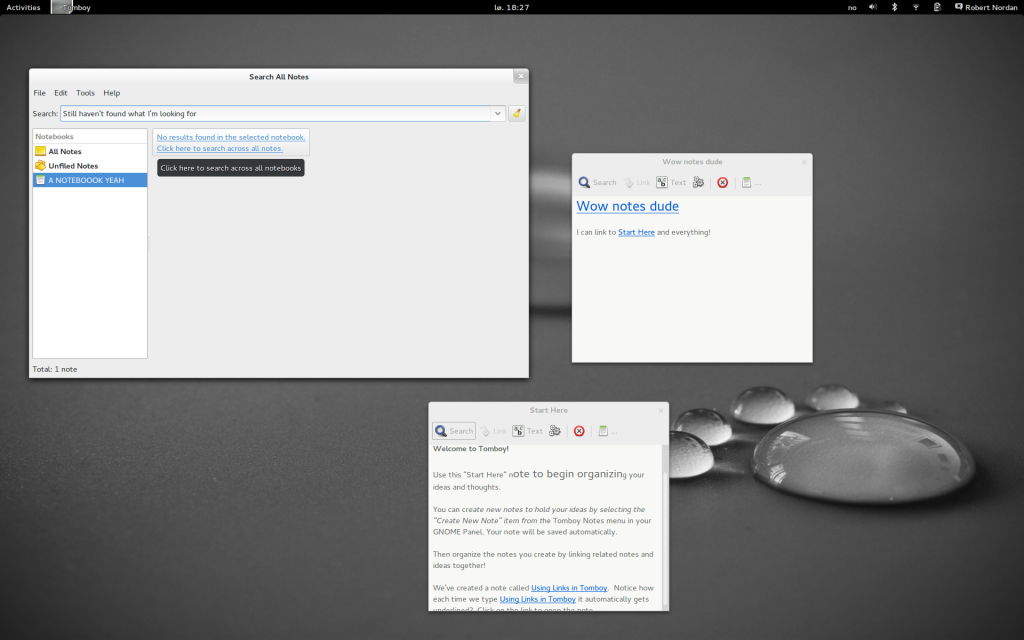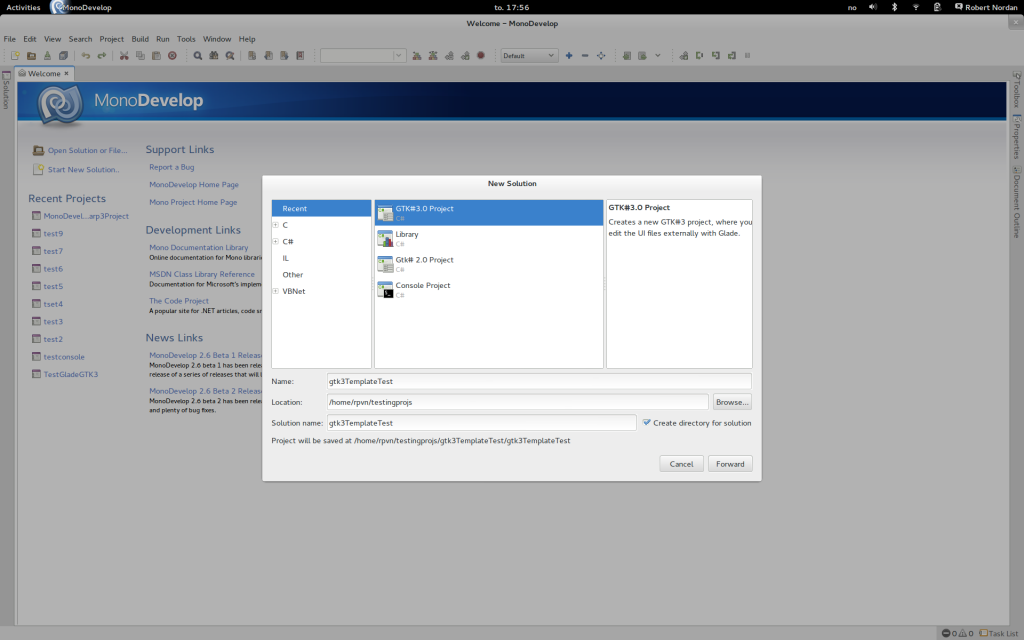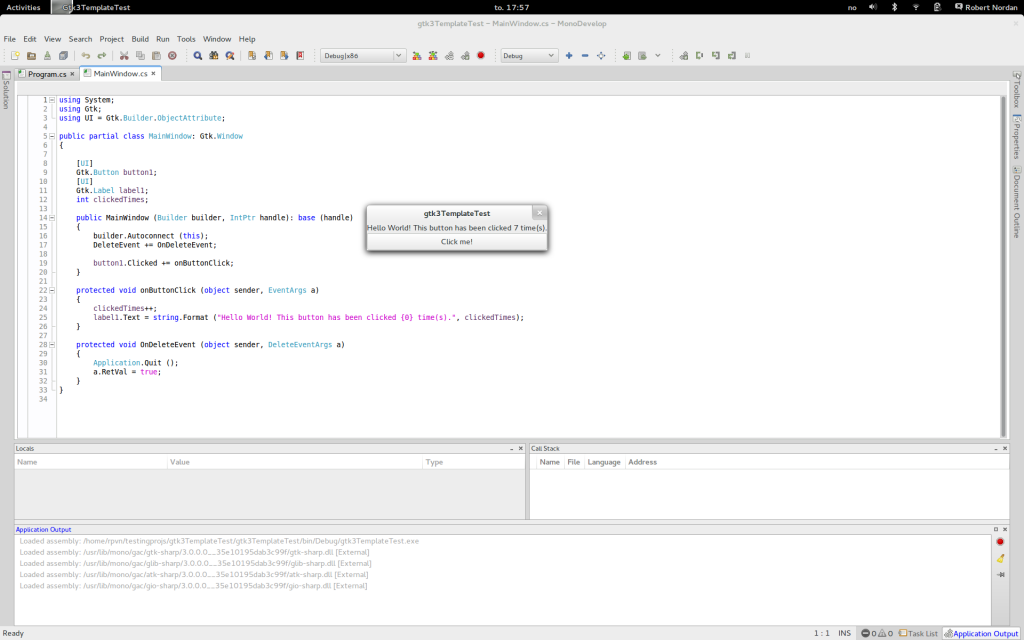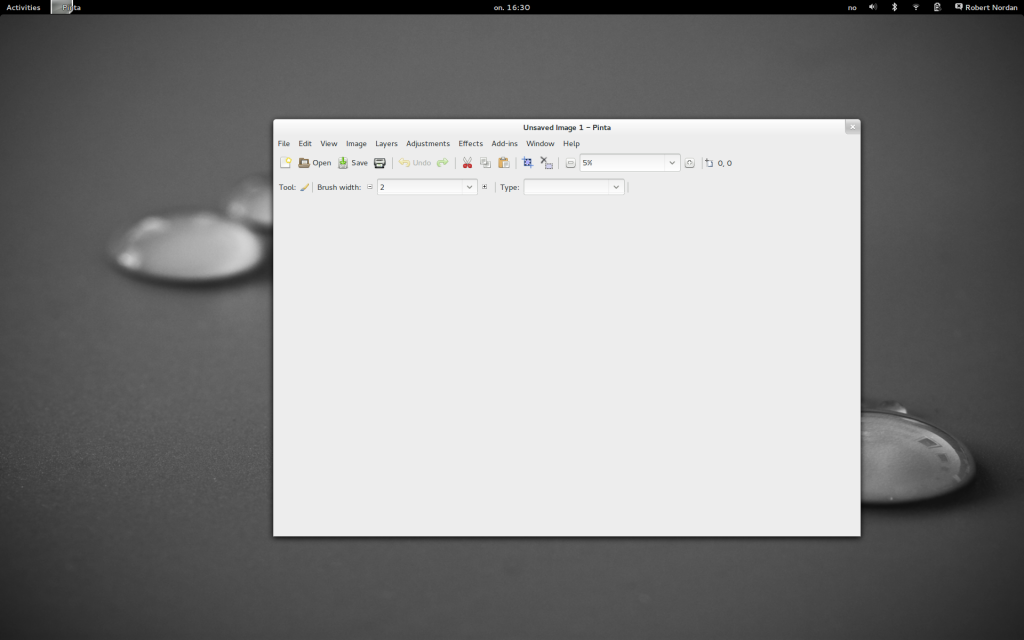I’ve been neglecting to blog the last three days because I’ve been going full steam ahead since the last blog post! After I finished the GTK#3 template for MonoDevelop, I moved on to use it to create a new Mono.Addins subproject named GuiGtk3. This subproject was needed so that apps depending on Mono.Addins.Gui (Pinta, Tomboy, F-Spot) could move forward, while still allowing GTK2 projects to use the original Gui. The API is identical, so all you need to do is drop it in place of ye olde one and change the using statement. Right now the pull request is pending.
With that successfully concluded, I took over where Stefan Hammer left off on Tomboy, and using all the knowledge I learned from Pinta, Mono.Addins, Mirco Bauer and Bertrand Lorentz I powered through Tomboy’s porting work. (Hopefully there will be a technical post/memo for future use forthcoming…) The net result is Tomboy, in GTK3, using GSettings, and with every last scrap of horrible icky C code evicted!
Right now the code is living in this branch, but we can expect a release in time for the next version of Ubuntu, when all the needed library dependencies have made it in. (If you want to run it, you need to pull down the Mono.Addins.GuiGtk3 branch mentioned previously and make install it to have the GTK3 Gui available.) There is one thorny issue remaining, which is the state of GTK3 on Windows and Mac. Someone will have to make installers for this on these platforms before we can make GTK#3 releases there, but I think that the current attitude is that Linux is the lead platform and the others will just have to wait.
The port is complete, but we don’t yet take advantage of all the features of Gnome Shell and/or Unity, so among the things we have noted for future improvement are improved DBus connections to allow direct interaction with the shell and making the panel applet an add-in which can be deactivated where appropriate.
The hackfest, summarised
I didn’t get to finish porting Pinta, but by tackling it head-on I learned some important things that were very useful when I did the projects I’ve completed this week. (Talk about diving in on the deep end!) I managed to make important contributions to tooling and dependencies for future GTK#3 work, and I managed a complete port of my first open source love, Tomboy Notes. We have had a great time together and been super productive, and there is no doubt in my mind that the benefits of inspiration and direct knowledge transfer that come from being in the same room cannot be matched in any other way.
Finally, let me once again thank our gracious sponsors:
 Norkart AS, Norway’s premier supplier of Geographic Information Systems and related consulting and my most lovely employer (website, logo)
Norkart AS, Norway’s premier supplier of Geographic Information Systems and related consulting and my most lovely employer (website, logo)

Collabora Ltd, Open Source Consulting (website, logo)
 Hotel Schottenpoint, Our hotel partner (website, logo)
Hotel Schottenpoint, Our hotel partner (website, logo)
 Novacoast IT, Professional Services and Product Development (website, logo)
Novacoast IT, Professional Services and Product Development (website, logo)
 The GNOME Foundation, providers of the GNOME desktop (website, logo)
The GNOME Foundation, providers of the GNOME desktop (website, logo)
Venue sponsor:

